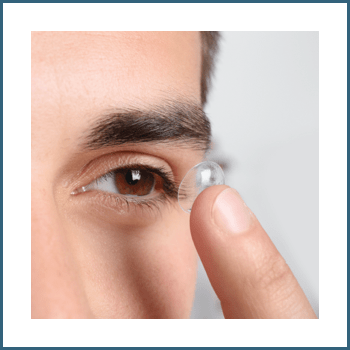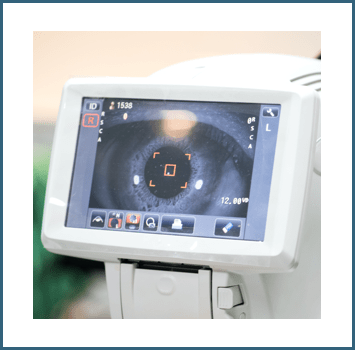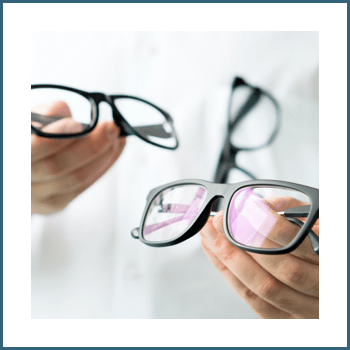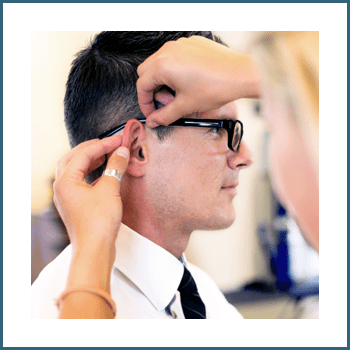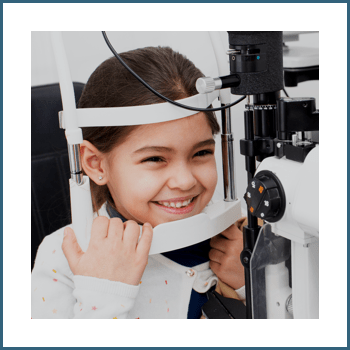Prevention & Diagnosis Is Crucial
There are many types of eye problems that can affect your visual health. Whether the condition causes mild discomfort or vision loss, it’s crucial to detect and treat problems early. Prevention and early diagnosis can improve health and vision outcomes.
Monitoring changes to your eyes and vision can also decrease other health risks, as some medical conditions can be detected in an eye examination.
Westmount Optometrists are here to help, from diagnosis to managing eye conditions. Regular comprehensive eye examinations can help us watch for changes in eye health and prevent eye disease.


Common Eye Conditions & Diseases
Eye care appointments help protect your health and manage vision problems. Our eye imaging technology, assessments, and discussion are crucial in detecting and treating many common eye conditions and diseases.
Optometrists have a vast wealth of knowledge related to eye conditions and diseases. But we’re also dedicated to learning about our patient’s unique eyes. By combining our expertise and information gathered from individual assessments, we can help protect your eyes from common eye conditions and diseases.
Age-Related Macular Degeneration
Age-related macular degeneration (AMD) is more common in patients over 55. However, macular degeneration can also be a complication from other conditions, including diabetes or degenerative myopia, which can occur in younger patients.
There are 2 forms of macular degeneration: dry and wet.
Dry AMD is milder and more common. The damage tends to progress more slowly. Wet AMD can progress faster, even suddenly. This typically results from leakage or bleeding around the macula, the part of the retina that helps us see central vision and fine details.
Dry AMD typically has few symptoms until it develops into wet AMD, with symptoms that include:
- Blurry central vision
- Dark or blank spots
- Difficulty recognizing faces
- Lines appearing wavy or distorted
Although the risk of developing macular degeneration increases with age, other significant risk factors include UV exposure, smoking, high blood pressure, and a family history of AMD. There is currently no treatment for dry AMD, but healthy lifestyle habits can help slow degeneration.
Wet AMD can be treated with medication injections or surgery. Early detection is crucial to prevent vision loss caused by AMD. Book eye examinations regularly so our team can watch over your eye health and recommend appropriate treatment.
Cataracts
Cataracts are cloudy spots that form in the normally clear eye lens. The cloudy spots can vary in size, affecting vision differently depending on how the cataract develops over time. Cataracts can affect anyone but are more common as we age. Protecting your eyes from UV damage and eating foods rich in antioxidants can help slow the growth of cataracts.
Cataract symptoms include:
- Blurry or foggy vision
- Poor colour vision
- Decreased night vision
- Halos or glare around lights
- Light sensitivity
- The feeling of a film over the eye
The recommended treatment can depend on how severely vision is impacted. We’ll also consider the patient’s comfort level. Common treatment options include prescription lenses and cataract surgery.
Conjunctivitis (Pink Eye)
Conjunctivitis, also known as pink eye or red eye, is an inflammation of the conjunctiva. The conjunctiva is clear tissue covering the white of the eye and the inner eyelids. Irritation causes the blood vessels in the conjunctiva to dilate, leading to bloodshot eyes.
Other common symptoms include light sensitivity, eye irritation, excessive tearing, and discharge (watery or mucousy).
There are 3 types of conjunctivitis:
- Infectious conjunctivitis: Bacterial and viral conjunctivitis are infectious and are typically spread through touching your eyes or face. Although this type can go away naturally, it can also harm eye health. It’s crucial to confirm the diagnosis with an optometrist and discuss treatment.
- Allergic conjunctivitis: Allergic conjunctivitis is an allergic reaction and is not contagious, however, it can be uncomfortable. Treatment can help alleviate symptoms.
- Chemical conjunctivitis: Chemical conjunctivitis is caused by chemical irritation. Your eyes may be irritated by perfume, smoke, or other chemical exposure. Flushing your eyes can help remove chemical irritants, but an eye examination can determine if the chemicals caused any eye damage and whether further treatment is necessary.
Diabetic Retinopathy
Diabetic retinopathy (DR) is a type of diabetic eye disease. It occurs when high blood sugar causes damage to blood vessels in the retina. The retina is a crucial part of our visual system, as it receives and converts light into signals for our brain. More than 500,000 Canadians are living with diabetic retinopathy.
Symptoms of diabetic retinopathy include:
- Blurry vision
- Dark spots or holes in vision
- Flashes of light
- Loss of central vision
- Inability to see colours
Diabetic retinopathy also increases the risk of other eye complications, including retinal detachment and diabetic macular edema.
Early detection is crucial in preventing vision loss. In the early stages of the eye disease, symptoms can be managed by controlling blood pressure and blood sugar. As the disease progression, options to prevent vision loss include:
- Anti-VEGF injections
- Retinal photocoagulation (laser therapy)
- Vitrectomy (surgery)
Retinal Detachment
As diabetic retinopathy develops, it damages blood vessels in the back of the eye where the retina is located. The retina is crucial to functioning vision, however, the tissue is delicate. Fluid leakage can cause the retina to lift away from the back of the eye and detach.
Common symptoms of retinal detachment include:
Some patients describe the decreased vision like a curtain or veil descending over their field of vision.
It’s crucial to seek immediate medical attention after retinal detachment. Surgery can repair 90% of detachment cases. Success can depend on the severity of the tear, scar tissue, and whether the macula was affected. The sooner a patient receives treatment, the better the chances of success.
Contact us for an emergency eye care appointment if you experience sudden vision loss, flashes, or floaters.
Diabetic Macular Edema
Macular edema or diabetic macular edema (DME) affects the health and function of the macula. The macula, located in the retina, allows us to see central (straight-ahead) vision as well as most of our colour vision. Eye conditions damaging the macula do not affect peripheral (side) vision.
Diabetic macular edema results from excess fluid buildup around the macula. High blood sugar levels cause damage to blood vessels in the back of the eye (diabetic retinopathy), leading to fluid leaking and tissue swelling. The increased fluid buildup causes the macula to swell and thicken.
Symptoms of macular edema include:
- Blurry or wavy central vision
- Washed out or faded colours
Treatment for diabetic macular edema can include laser therapy or injectable medications.
Glaucoma
Glaucoma is a group of eye diseases that damage the optic nerve, causing vision loss. There are multiple types of glaucoma, with most occurring because of increased intraocular pressure (IOP). It’s the leading cause of blindness in Canada.
Early detection is crucial to preventing vision loss, but many patients do not observe symptoms in the early stages of development. By measuring IOP and assessing vision regularly, our optometrists can diagnose changes to eye health that indicate glaucoma.
Types of glaucoma include:
- Primary open-angle glaucoma: Fluid doesn’t drain effectively from the eye, building pressure inside the eye and damaging the optic nerve. This slow-developing type of glaucoma is the most common.
- Angle-closure glaucoma: A rare type caused by a sudden blockage or closure that prevents drainage in the eye. Eye pressure can build quickly and may cause sudden vision loss. The condition is a medical emergency.
- Secondary glaucoma: Glaucoma resulting from trauma, infection, or as a symptom of a medical condition. Fluid buildup and eye pressure can increase, deteriorating the optic nerve.
- Normal-tension glaucoma: Eye pressure levels remain in the normal range, but the optic nerve deteriorates. The cause is unclear, but it may be the result of an overly sensitive optic nerve.
Floaters
Floaters can appear as spots, squiggles, cobwebs, or various shadowy shapes. Although it may seem like floaters are crossing over your vision, they’re caused by protein deposits and cells inside the eye. Floaters are contained in the vitreous, a gel-like substance located between the lens and the retina.
The sudden appearance of shapes may seem alarming, but floaters are not harmful and typically do not require treatment. However, if floaters appear more frequently, it can indicate a separate and more severe eye condition, including retinal detachment.
If you notice larger floaters or a sudden increase in frequency, contact us for an eye examination.
Flashes
Flashes of light appearing in the corner of your eye or side vision are often a symptom of an eye condition. These flashes, called photopsia, can affect one or both eyes. The shapes of the vision distortion can vary, and can sometimes be referred to as “seeing stars.”
The flashes occur when eye pressure or force, typically caused by the vitreous, pulls on the retina. Normally, the retina receives light gathered by the eye and sends it as electrical signals through the optic nerve. However, the sudden pressure or trauma can cause the retina to signal a sudden flash of light.
Flashes can indicate a significant health problem, particularly if caused by injury or head trauma. If you experience flashes without trauma or injury, contact us immediately. Sudden flashes can be a symptom of an eye emergency.
Diagnosing Eye Health: IOP
Optometrists use various eye imaging technologies and assessments to evaluate eye health and diagnose eye conditions. One common test type is measuring intraocular eye pressure (IOP). Monitoring eye pressure is crucial in detecting glaucoma, a common sight-stealing disease.
Eye pressure can indicate problems with fluid drainage, which can affect the optic nerve. The optic nerve is responsible for sending signals from our eyes to our brain. Westmount Optometrists use Goldmann tonometry, non-contact tonometry, and the iCare tonometer to evaluate eye pressure.
Goldmann Tonometry
Goldmann tonometry (or applanation tonometry) uses a small probe to gently flatten the surface of the eye.
The patient’s eyes are numbed with eye drops before the test. Dye is used, sometimes included in the eye drops or placed with a fine strip of paper. Then, the optometrist examines the patient’s eyes while focusing light with a slit lamp.
There is no discomfort during the test. However, the numbing eye drops can cause blurry vision or light sensitivity for a few hours after your appointment.
iCare Tonometer
The iCare tonometer is a quicker alternative to applanation tonometry. The procedure is similar and still uses eye drops to limit patient discomfort.
The iCare device is handle-held and is used to gently tap the surface of the cornea. The device instantly measures intraocular eye pressure (IOP).
Non-Contact Tonometry
Non-contact tonometry is best known as the “puff test.” The testing instrument does not touch the patient’s eye and no eye drops are required. The hardest part can be getting the patient to sit still while facing a puff of air. Although there is no discomfort, it can be surprising!
The device measures intraocular eye pressure (IOP) using a tiny beam of light. When the air puff reaches the eye, the pressure temporarily flattens the cornea, causing the beam of light to move. The device calculates the light movement to measure eye pressure.
Prevent Eye Disease with Regular Visits
Many eye diseases and conditions can develop slowly but can affect vision and eye health over time. Early diagnosis and prevention can protect your health and sight. Visit us regularly for an eye checkup. The more often we see you, the better we can help you manage your eye health. Book your regular eye examination now!

Frames We Love!





Where To Find Us
At the corner of Springbank Drive and Wonderland Road, our clinic offers plenty of parking out front.

Our Address
- 585 Springbank Dr.
- London, ON N6J1H3
Talk to Us
- Phone: 519-472-0210
- Email: [email protected]
Our Hours
- Monday: 8:00 AM – 7:30 PM
- Tuesday: 8:00 AM – 7:30 PM
- Wednesday: 8:00 AM – 7:30 PM
- Thursday: 8:00 AM – 7:30 PM
- Friday: 8:00 AM – 5:00 PM
- Saturday: Closed
- Sunday: Closed
Read Our Blog
Vitamins for Dry Eyes: Omega 3’s & More
Dry Eye, Eye CareExperiencing the discomfort of dry eyes can be more than just an irritation—it can significantly impact your quality of life. But what if the foods you eat could help you prevent and manage symptoms like stinging sensations? Now may be the time to book an eye exam and get personal advice on your eye nutrition. […]
How Long Can Eye Strain Last?
Digital Eye Strain, Eye CareHow long eye strain lasts can vary in individuals. However, eye strain symptoms can subside after an hour when you stop the activity that caused it. Prolonged eye strain could indicate an underlying eye problem. […]
What Happens During a Contact Lens Fitting?
Contact LensesIf you’re tired of wearing glasses and considering switching to contact lenses, or maybe you’re already a seasoned contact lens wearer and want to learn more about the fitting process, you’ve come to the right place. Contact lenses have revolutionized how we see and experience the world, providing a convenient and comfortable alternative to traditional […]
Vitamins for Dry Eyes: Omega 3’s & More
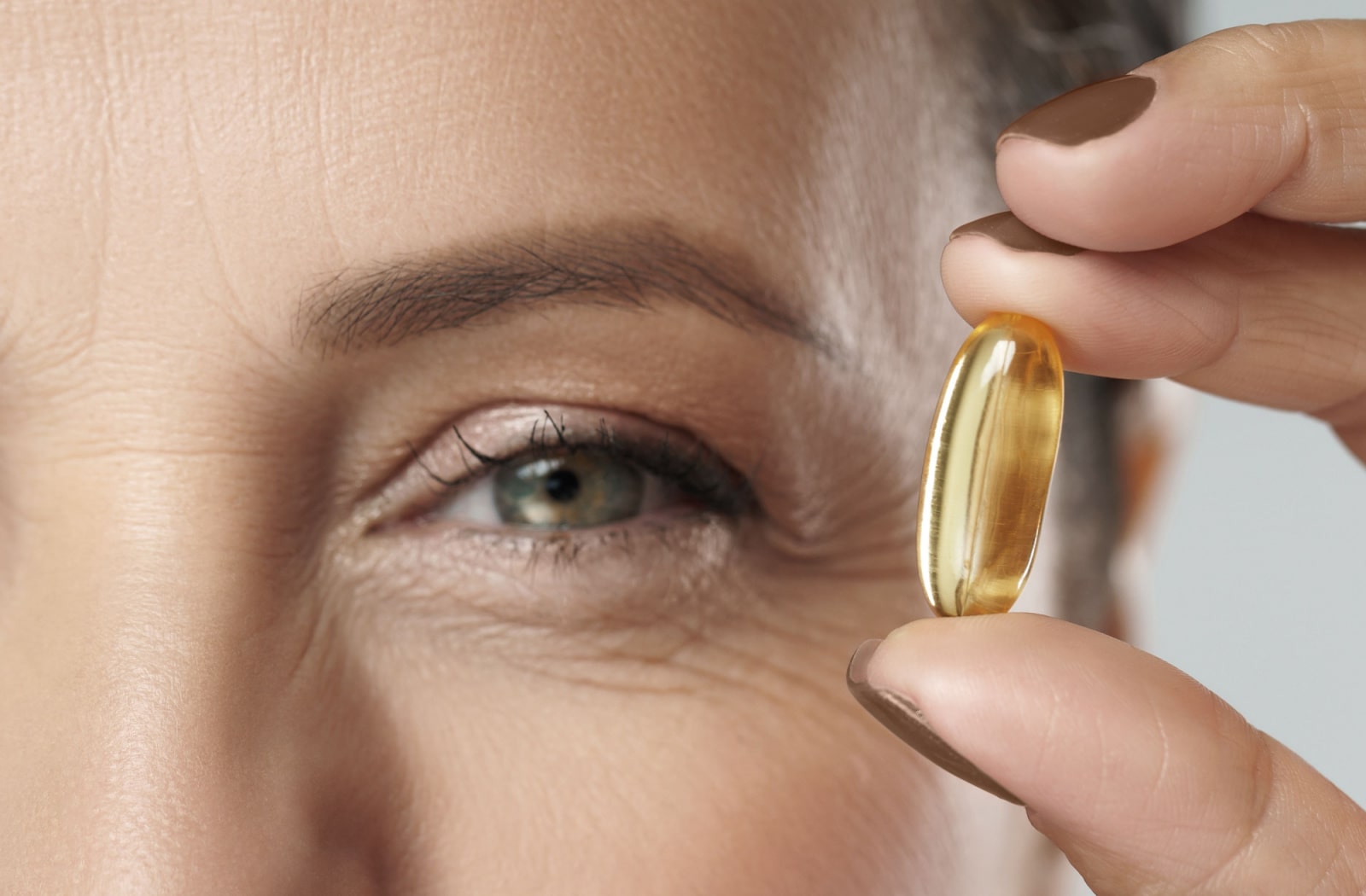
Experiencing the discomfort of dry eyes can be more than just an irritation—it can significantly impact your quality of life. But what if the foods you eat could help you prevent and manage symptoms like stinging sensations? Now may be the time to book an eye exam and get personal advice on your eye nutrition. […]
How Long Can Eye Strain Last?

How long eye strain lasts can vary in individuals. However, eye strain symptoms can subside after an hour when you stop the activity that caused it. Prolonged eye strain could indicate an underlying eye problem. […]
What Happens During a Contact Lens Fitting?

If you’re tired of wearing glasses and considering switching to contact lenses, or maybe you’re already a seasoned contact lens wearer and want to learn more about the fitting process, you’ve come to the right place. Contact lenses have revolutionized how we see and experience the world, providing a convenient and comfortable alternative to traditional […]



